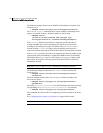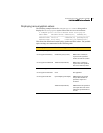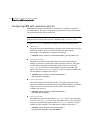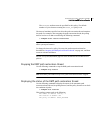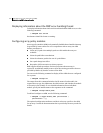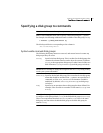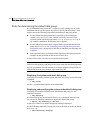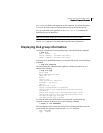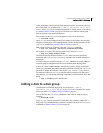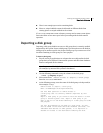
166 Creating and administering disk groups
As system administrator, you can create additional disk groups to arrange your
system’s disks for different purposes. Many systems do not use more than one
disk group, unless they have a large number of disks. Disks can be initialized,
reserved, and added to disk groups at any time. Disks need not be added to disk
groups until the disks are needed to create VxVM objects.
When a disk is added to a disk group, it is given a name (for example, mydg02).
This name identifies a disk for operations such as volume creation or mirroring.
The name also relates directly to the underlying physical disk. If a physical disk
is moved to a different target address or to a different controller, the name
mydg02 continues to refer to it. Disks can be replaced by first associating a
different physical disk with the name of the disk to be replaced and then
recovering any volume data that was stored on the original disk (from mirrors or
backup copies).
Having disk groups that contain many disks and VxVM objects causes the
private region to fill. In the case of large disk groups that are expected to contain
more than several hundred disks and VxVM objects, disks should be set up with
larger private areas. A major portion of a private region provides space for a disk
group configuration database that contains records for each VxVM object in that
disk group. Because each configuration record takes up approximately 256
bytes, the number of records that can be created in a disk group can be
estimated from the configuration database copy size. The copy size in blocks can
be obtained from the output of the command
vxdg list diskgroup as the value of
the permlen parameter on the line starting with the string “config:”. This
value is the smallest of the len values for all copies of the configuration
database in the disk group. The amount of remaining free space in the
configuration database is shown as the value of the free parameter. An
example is shown in “Displaying disk group information” on page 169. One way
to overcome the problem of running out of free space is to split the affected disk
group into two separate disk groups. See “Reorganizing the contents of disk
groups” on page 195 for details.
For information on backing up and restoring disk group configurations, see
“Backing up and restoring disk group configuration data” on page 213.



